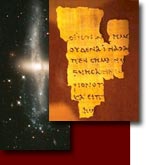| Site Map | Contacts | Links | Newsletter | |
The Bible:
Genesis, A Royal Epic
Book by Loren Fisher
Review by Stephen C. Meyers
Genesis, A Royal Epic is a welcomed new translation of Genesis. The introduction, notes and appendixes alone make it a worthwhile book. In the preface Loren Fisher reveals his major presupposition that Genesis is a royal epic written during the Davidic monarchy (10th century BC setting, p. 11). I see his presupposition as also the major problem of this book. Scholarship is divided, but more are moving away from Fisher’s position because of the weight of the archaeological evidence. The most popular treatment of recent scholarship is the book The Bible Unearthed by Israel Finkelstein and Neil Silberman. They posit a 7th century BC setting for the book of Genesis. Fisher takes up part of this debate in Appendix I.
According to Finkelstein’s archaeological surveys, there was no vast empire during the reigns of David and Solomon. The supposed legendary Solomonic gates probably date 100 years later. The background of Genesis is best reflected in a 7th century BC when Josiah came to power according to Finkelstein. For example, there is the mention of camel caravans carrying gum, balm, and myrrh in the Joseph story which best reflects the Arab trade under the Assyrian empire. There are many anachronisms in Genesis like the mention of the Philistines who do not come to Canaan until after 1200 BC. Even though Fisher disagrees, this does not affect the quality of his translation.
Fisher’s suggestion that the stories of Genesis were formed at the tombs of their ancestors is intriguing. He compares this to other ancient liturgies some of which were seven-day rituals. Genealogies may have also developed at these funeral rituals. He goes on to demonstrate how proper burial was very important in ancient cultures.
There are numerous notes to the translation of Genesis that are very helpful. I only wish there were a few more notes to explain why he translated a certain words like “storm” in Genesis 1:2 and “flood” in Genesis 2:6. Fisher takes a very literal approach to his translation. For example, he translates ‘elohim (God) as plural “gods” in Genesis 5:22, 24 and 6:9. I like how he transliterates the names of God instead of translating them so there is no confusion of names.
In Appendix II, Fisher deals with the Creation/Evolution debate. Fisher proclaims, “It is important to know that the creationists know very little about Genesis, and we need to make this known” (p.267). His two major suppositions are: Creation science is not science and Creation science is not based on Genesis. Recent court decisions show that creation science is not science. “Its central hypothesis (in this case supernatural creation) is not open to falsification” states Fisher.
I like Fisher’s use of the word “formed” instead of “created” in Genesis one, because of the theological baggage of the word “created” implying “ex nihilo” or “out of nothing.” Fisher explains that there are two basic types of creation stories in the ancient world: theogony, the origins of things by the procreation of the gods; and cosmogony in which chaos is fashioned into cosmos. Many times there is a battle between chaos which leads to order.
Fisher takes the phrase “Day One” in Genesis 1:5 as referring to the end of a “cultic day” on which the first act of creation was celebrated in a seven day ritual. This is an interesting suggestion. In ancient times the phrase "day one" was much discussed, because the cardinal number (one) is used as opposed to the ordinal (first) as in the rest of this chapter.
In Genesis three Fisher states that there is no fall into sin, rather a decision to give up life for knowledge. Death is seen as natural. It is later on that theologians read a fall into this chapter.
Overall, Genesis, A Royal Epic is a good literal translation of Genesis that will upset creationists. I recommend this book as a worthy reference for your library.
--This article was first published in National Center for Science Education’s journal, Reports Jan.-Feb. 2003. Their website is at www.ncseweb.org.
